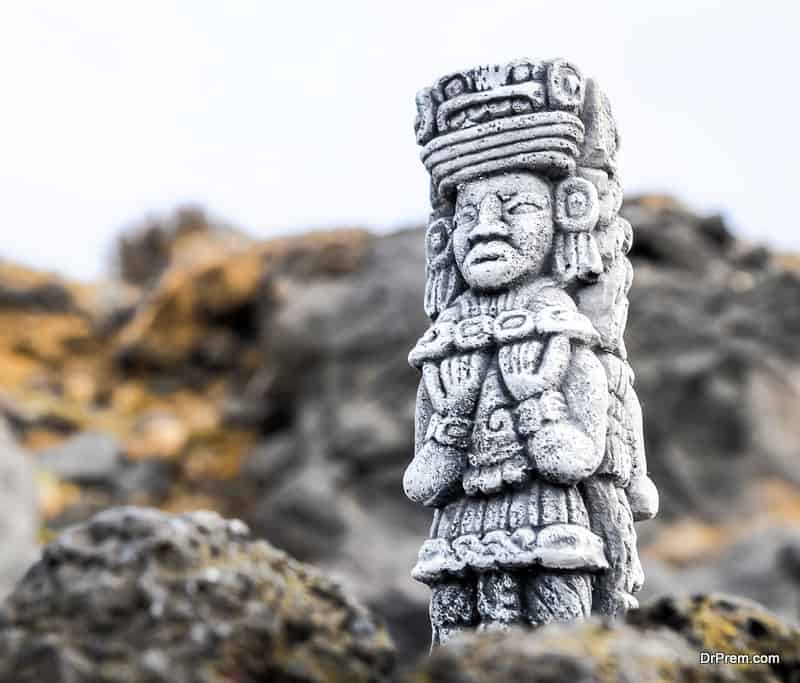The inca civilization appear from the highlands of Peru in the early 13th century. They began to occupy islands surrounding the inca heartland of Cuzco which creates the largest empire in pre-columbian America. Are you in plan of visiting some fantastic things? Here are the sum of inca ruins which you can enjoy your trip. Sure you will appreciate by seeing the ancient inca ruins in the highlands of south America. South America is the land of many cultures and warring. Want to know more then check out these great non-inca ruins.
Choquequirao[lightbox full=”http://drprem.com/travel/wp-content/uploads/2013/08/Choquequirao.jpeg”][/lightbox]
Choquequirao is located in sacred valley of the Incas, Peru. It is similar to the structure and architecture to Machu Picchu. That’s why it is called as the sister of Machu Picchu. Choquequirao is one of the ancient ruin complex consists of temples and palaces on canals. The inca ruins contains a staircase which is made up of 180 terraces built in different styles. You can reach to choquequirao by foot or horseback. You can be guided to reach choquequirao. It is the starting point for travelers those who want to see the newly rediscovered incan site.
Machu Picchu[lightbox full=”http://drprem.com/travel/wp-content/uploads/2013/08/Machu-Picchu.jpg”][/lightbox]
Machu Picchu was rediscovered by Hawaiian historian hiram in 1911. This beautiful Inca is well known as the ancient inca ruins in the world. The view from the ruin is impressive. The lost city of the inca is invisible and completely surrounded by agricultural terraces and natural springs. A sharp mountain peaks, green valley and watered breezes give the inca very special. Visiting of peru would not be complete without the Machu Picchu.
Moray[lightbox full=”http://drprem.com/travel/wp-content/uploads/2013/08/Moray.jpg”][/lightbox]
Moray is an archeological site in Peru. It is an incan agricultural laboratory used to cultivate resistant and hearty varieties of plants high in the andes. The site consists of several circular terraced depressions. The largest one is about 30 m deep. You can feel the temperature difference between the top and buttom craters. This is used to study the effects of climatic conditions on crops.
Isla del Sol[lightbox full=”http://drprem.com/travel/wp-content/uploads/2013/08/Isla-del-Sol.jpg”][/lightbox]
Isla del Sol is an island which is located in the southern part of Lake Titicaca. It is rocky and hilly island with many eucalyptus trees. Economy of the island is from farming, fishing and tourism. Almost 80 ruins on the island which date to the inca period circa the 15th century AD. Most of the religion of the incas believe that the sun god was born in this place.
Winay Wayna[lightbox full=”http://drprem.com/travel/wp-content/uploads/2013/08/Winay-Wayna.jp”][/lightbox]
Winay wayna is an Inca ruin built into a hillside overlooking the Urubamba River. The location consists of lower and upper house complexes which are connected by a stair case and fountain structures. You can view beautiful agricultural terraces which are built above and below the houses.
Ollantaytambo[lightbox full=”http://drprem.com/travel/wp-content/uploads/2013/08/Ollantaytambo.jpg”][/lightbox]
Ollantaytambo is the town and Inca archaeological site located in the southern peru which is 60 kilometers northwest of the city Cusco. It became an important tourist attraction of its inca buildings. It is the starting points for the inca trail. Pinkullyuna is the hill with incan storehouses which faces the main ruins. You can view most spectacular views of the Ollantaytambo ruins and the Urubamba valley from Pinkullyuna. Ollantaytambo is the perfect place for narrow byways, stone buildings, wandering the mazy and irrigation channels.
Saksaywaman[lightbox full=”http://drprem.com/travel/wp-content/uploads/2013/08/Saksaywaman.jpg”][/lightbox]
Have you seen a walled complex? Here is the Saksaywaman which is a walled complex on the northern outskirts of the city Cusco, Peru. Polished dry stone is used for constructing the walls. It has an impressive view of the valley to the southeast. Saksaywaman is the best example for inca architectural skills. One of the stone is 29 feet high and weighs 360 tons. There is still mystery how the stone work is constructed. The stones are placed and molded by interlocking each other.
Qurikancha[lightbox full=”http://”][/lightbox]
Qurikancha is an inca temple complex located in the capital city of Cusco, Peru. This is dedicated to the sun god of Incas. It is constructed on the natural hill under the direction of Inka ruler Viracocha about 1200AD. The walls and floors of the temple are covered with solid gold and golden statues. The inca stone walls are tightly interlocked and still stands even though it got effected with earthquakes.
Pisac[lightbox full=”http://drprem.com/travel/wp-content/uploads/2013/08/Pisac.jpg”][/lightbox]
It is the small town of about 35km from Cuzco. Pisac attracts many tourist from nearby Cusco by the markets. This area is best known for the incan ruins. At the entrance you can find a hill atop of the valley. The ruins are separated by four groups like Qallaqasa, Kinchiracay, Pisaqa and Intihuatana. Pisca inca constructed agricultural terraces on the hillside which are still used for today.
Llactapata[lightbox full=”http://drprem.com/travel/wp-content/uploads/2013/08/Llaqtapata.jpg”][/lightbox]
Llactapata is an archeological site of about 5km west of Manchu Picchu. It consists of ruins as well as flora and fauna. It is used for crop production and storage. Llactapata is first discovered by Bingham in 1912. You can also see two to three modern huts. Most of the Indians said that the place was called Llacta Pata.


